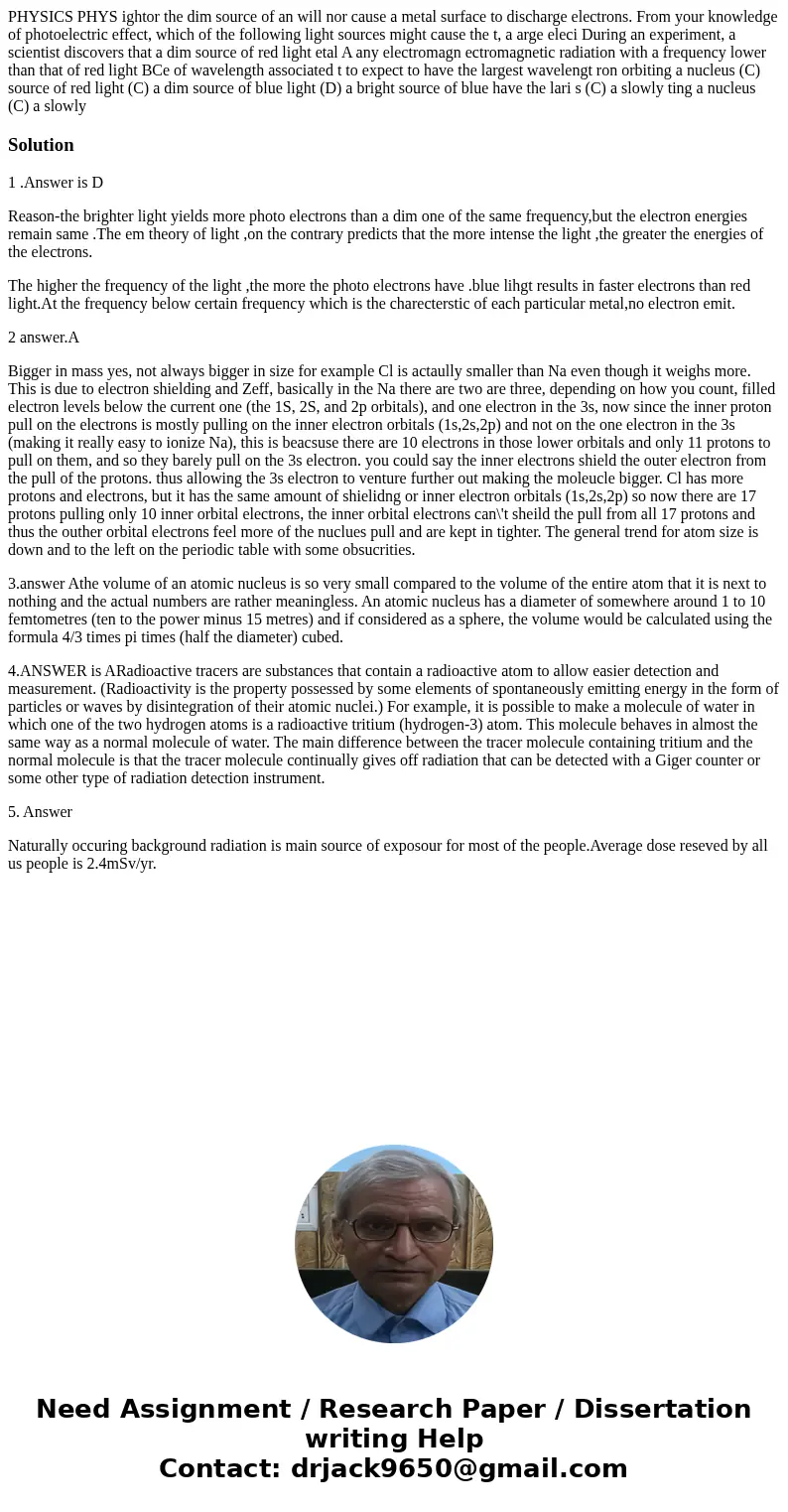PHYSICS PHYS ightor the dim source of an will nor cause a me
Solution
1 .Answer is D
Reason-the brighter light yields more photo electrons than a dim one of the same frequency,but the electron energies remain same .The em theory of light ,on the contrary predicts that the more intense the light ,the greater the energies of the electrons.
The higher the frequency of the light ,the more the photo electrons have .blue lihgt results in faster electrons than red light.At the frequency below certain frequency which is the charecterstic of each particular metal,no electron emit.
2 answer.A
Bigger in mass yes, not always bigger in size for example Cl is actaully smaller than Na even though it weighs more. This is due to electron shielding and Zeff, basically in the Na there are two are three, depending on how you count, filled electron levels below the current one (the 1S, 2S, and 2p orbitals), and one electron in the 3s, now since the inner proton pull on the electrons is mostly pulling on the inner electron orbitals (1s,2s,2p) and not on the one electron in the 3s (making it really easy to ionize Na), this is beacsuse there are 10 electrons in those lower orbitals and only 11 protons to pull on them, and so they barely pull on the 3s electron. you could say the inner electrons shield the outer electron from the pull of the protons. thus allowing the 3s electron to venture further out making the moleucle bigger. Cl has more protons and electrons, but it has the same amount of shielidng or inner electron orbitals (1s,2s,2p) so now there are 17 protons pulling only 10 inner orbital electrons, the inner orbital electrons can\'t sheild the pull from all 17 protons and thus the outher orbital electrons feel more of the nuclues pull and are kept in tighter. The general trend for atom size is down and to the left on the periodic table with some obsucrities.
3.answer Athe volume of an atomic nucleus is so very small compared to the volume of the entire atom that it is next to nothing and the actual numbers are rather meaningless. An atomic nucleus has a diameter of somewhere around 1 to 10 femtometres (ten to the power minus 15 metres) and if considered as a sphere, the volume would be calculated using the formula 4/3 times pi times (half the diameter) cubed.
4.ANSWER is ARadioactive tracers are substances that contain a radioactive atom to allow easier detection and measurement. (Radioactivity is the property possessed by some elements of spontaneously emitting energy in the form of particles or waves by disintegration of their atomic nuclei.) For example, it is possible to make a molecule of water in which one of the two hydrogen atoms is a radioactive tritium (hydrogen-3) atom. This molecule behaves in almost the same way as a normal molecule of water. The main difference between the tracer molecule containing tritium and the normal molecule is that the tracer molecule continually gives off radiation that can be detected with a Giger counter or some other type of radiation detection instrument.
5. Answer
Naturally occuring background radiation is main source of exposour for most of the people.Average dose reseved by all us people is 2.4mSv/yr.

 Homework Sourse
Homework Sourse